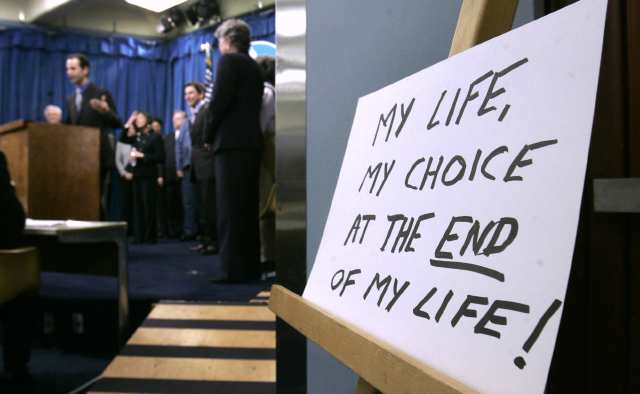Terminally ill and older patients should have the right to choose between death and treatment
On Nov. 1, 2014, Brittany Maynard made a decision that shocked the country: she ended her own life by right of the law. After being diagnosed with terminal brain cancer and learning of her six month prognosis, Maynard decided to do what most people would never have the courage to go through with by committing pre-planned “assisted suicide.” Her choice sparked a great controversy, prompting all who heard her story to wonder if assisted suicide is a justified option for the terminally ill. Currently, the right to death with dignity is only legal in four states: Oregon, Vermont, Washington and New Mexico. But no matter what, people should be entitled to do whatever they want with their bodies, no one should be forced to endure the painful progression of a terminal illness against their will and those who choose assisted suicide often save their family from the heartache that comes with watching a loved one suffer.
Though preached often, it is true: what a person does with his or her body is his or her business and no one else’s. Whether the choice is to get a tattoo or undergo plastic surgery, the inherent function of the philosophy stays the same: it is unjust to keep a person from making a decision about his or her life, regardless of the extent to which one disagrees with that decision. Maynard did not intend to end her life out of a poorly planned, impulsive decision; her death was the culmination of time spent exploring all possible options and with the consensus of her family that her suicide was the best thing for her. If this were the case with other patients seeking to commit assisted suicide, then there is no justifiable argument against their decision.
“Who has the right to tell me that I don’t deserve this choice?” said Maynard to CNN on her decision to ingest lethal medication. “[To tell me] that I deserve to suffer for weeks or months in tremendous amounts of physical and emotional pain? Why should anyone have the right to make that choice for me?”
Maynard’s and anyone else’s decision to end his or her own life is not only justified by the fact that one should be able to make decisions about his or her own body, but one must consider the fact that without assisted suicide, Maynard would have been forced to endure months of pain. As with most terminal illnesses, the deterioration leading up to death is painful. In Maynard’s case, with a prognosis of only six months and facing effects such as radiation burns, hair loss, personality change and the loss of basic motor and speech control, euthanasia was the only humane option on the table.
“It’s their life and their choice,” said sophomore Miranda Anapol. “If their illness has an impact on their brain and choices then maybe not, but otherwise it’s their decision.”
Those who choose euthanasia, a painless death via medication, are obviously not the only ones affected by their decision; they must also consider the impact their intentional death would have on others. But in the end, being able to say goodbye to a loved one in relative health is infinitely better than the alternative of having to watch him or her slowly suffer and deteriorate into an unresponsive patient in a hospital or hospice. Maynard was saving herself from a cruel and protracted death, and also saving her friends and family from enduring this with her.
Although the topic can be endlessly debated, the fact of the matter is that, with justifiable cause, assisted suicide is a valid option. Everyone has the right to make that decision. No one wants to be in a situation where they must face death or prolonged pain, but people must be open to accepting the sad fact that sometimes, death is the better option.
Your donation will support the student journalists of Calabasas High School. Your contribution will allow us to purchase equipment and cover our annual website hosting costs.







